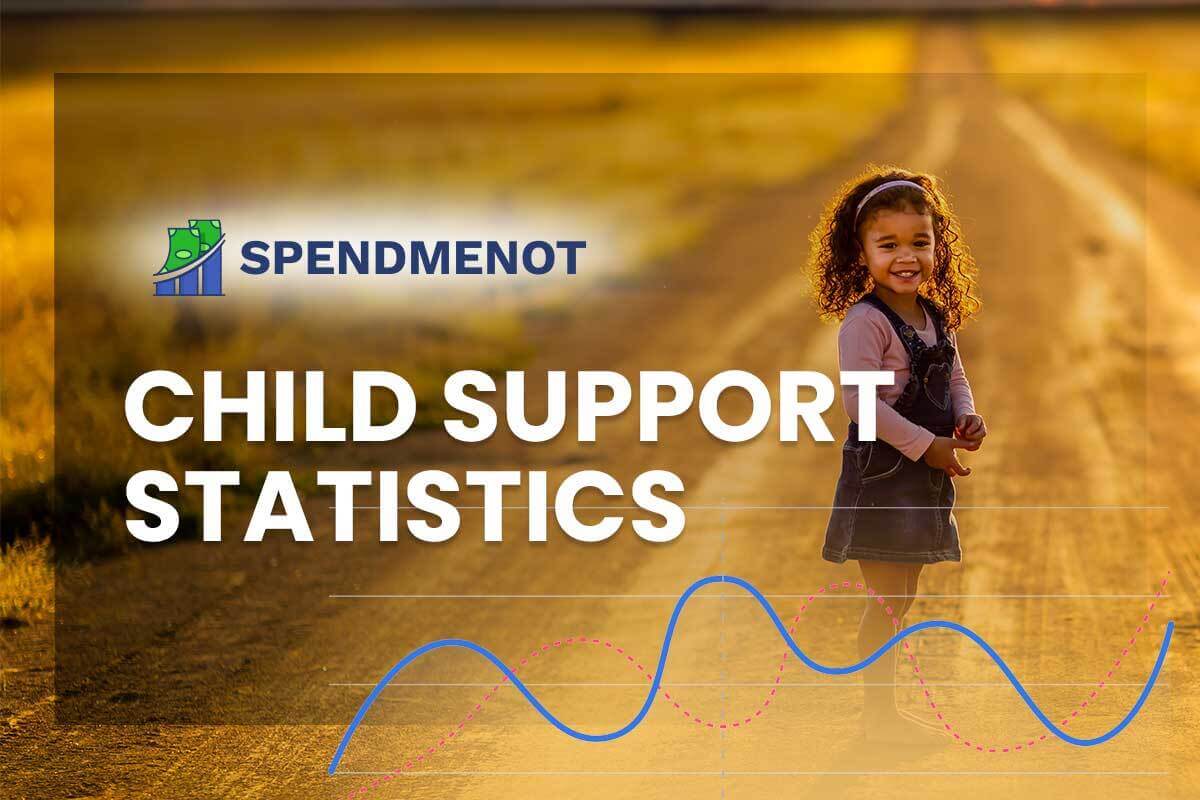33+ Incredible Online Shopping Statistics in 2023
Last Updated: March 10, 2023
Online shopping has been growing for years.
And it’s still on the rise.
Online shopping statistics are a great example of the butterfly effect.
Let’s take mobile shopping for example.
If you own an online store or you’re thinking of getting your business online, our stats can help you understand consumer behavior.
Armed with the right information, you will be ahead of your competition in no time!
Take a look at these online shopping stats:
Online Shopping Statistics (Editor’s Pick):
- 1.8 billion people bought goods online in 2018.
- Ecommerce sales could rise to over $690 billion for 2020.
- 60% of women regularly buy from Amazon.
- 63% of shopping starts online.
- 62% of online shoppers shop at least once a month.
- Mobile shopping grew to 15% in 2019.
- With a gross merchandise volume of $515 billion, Taobao is the biggest online marketplace in the world.
Global Online Sales Statistics
Online shopping is growing at different rates around the world. We can still notice some global trends, though. Shopping via digital channels is on the rise, both in the US and in other parts of the world.
1. There are between 12 and 24 million online stores in the world.
(Source: Digital Commerce 360)
How many online stores are there in the world?
According to a calculation by Digital Commerce 360, it could be up to 24 million. However, only a few hundred thousand of them are likely to be generating more than $1,000 dollars per year.
If you also want to venture into the business world, here are some useful products and services that may help you in starting and running your business:
- Privacy Policy Generators
- Online Legal Services
- Payroll Software
- POS Systems
- Business Card Printing Services
- Accounting Software
- Online Bookkeeping Services
Moving on:
2. The average eCommerce site generates over $150,000 per month by month three.
(Source: RJ Metrics)
How much does the average eCommerce site make? On average, eCommerce sites bring in more than $150,000 by their third month in business. However, it’s important to remember that successful stores tip the scales. Smaller companies can expect to grow much more slowly.
3. 1.8 billion people bought goods online in 2018.
(Source: Statista)
To kick off our stats on online shopping, here’s one that shows the general growth of online shopping around the world. 1.8 billion people worldwide have bought goods online in 2018. That’s about 23% of the global population. This amounted to $2.8 trillion of online sales around the world in one year. On top of that, this figure is predicted to almost double by 2021, rising to $4.8 trillion.
Moving on to one country in particular:
4. Online sales in China generated $333.45 billion in Q1 of 2019.
(Source: China Internet Watch)
Which country buys online most? In the first quarter of 2019, 22.9% of the total revenue from retail sales came from the online sales of goods and services. In China, $333.45 billion worth of products and services sold online in Q1 of 2019. This makes it the largest ecommerce market in the world.
In fact:
5. The Chinese platform Taobao is the largest online marketplace with a GMV of $515 billion.
(Source: Statista)
China has a population of more than 1.4 billion. It also has a reputation for being both at the forefront of technology and a global player in affordable products. So, it’s no surprise that it is responsible for a large percentage of online sales. The Chinese retail platform Taobao is the biggest online marketplace in the world. Their gross merchandise volume (GMV) is $515 billion. The next largest two platforms, Tmall and Amazon, with $432 and $344 billion respectively. Taobao hugely outperforms its two closest competitors.
Online Shopping in the US
If you’re more interested in online shopping growth statistics in the US, we’ve got you covered!
As you might suspect, people in the US have definitely taken to online shopping, with the majority of them now shopping online.
Let’s take a good look at that:
6. About 8 in 10 Americans now shop online.
(Source: Fit Small Business)
How many online shoppers are there in the United States?
With 79% of Americans having made an online purchase of any type, roughly 8 in 10 Americans have shopped online. This is a rise of 22% since 2002. The numbers will surely continue to grow. Eventually, it will probably be rare to find someone who has never bought anything online.
What’s more:
7. There could be 230.5 million people shopping online in the US by 2021.
(Source: Statista)
More and more people are shopping online. It’s projected that by 2021, more than 230 million people will be digital shoppers. This includes anyone who browses online for digital products, even if they don’t eventually go on to make a purchase.
Moving on:
8. Households with an annual income above $50,000 use 7% of their spending online.
(Source: Washington Post)
People with more money spend a higher percentage of their income online. Statistics on online shopping show that households with income about $50,000 per year put 7% of their annual spending toward online shopping. In contrast, households with lower incomes only spend 3.4% of their money on online shopping. That’s less than half of what higher-earning households spend.
If you think that’s interesting, take a look at this next statistic:
9. Sales from Thanksgiving and Cyber Monday rose by 6% in 2018.
(Source: Washington Post)
The holidays are unsurprisingly a popular time of year for shopping online. One reason for this is the huge sales events, which may have started in-store but are now popular online too. Sales from Thanksgiving, Black Friday, and Cyber Monday rose by 6% in 2018. On Cyber Monday, there were over $7.9 billion in online sales.
And it’s not just a holiday phenomenon either:
10. 23% of Americans shopped online more in 2018 than in previous years.
(Source: Brookings)
Americans are shopping online more than they ever have. Looking at online shopping statistics by year 23% of Americans say that they shopped online more in 2018. Not only that, but 11% also reported that they planned to increase their online shopping in 2019.
In addition to this:
11. Ecommerce sales have been estimated at over $690 billion for 2020.
(Source: EMarketer)
An increased percentage of online shoppers means more money being spent online. An estimated $690.84 billion will be spent in 2020. The number is expected to rise to $891.7 billion by 2022. This is compared to $454.91 billion in 2017 and $526.09 billion in 2018. Ecommerce sales in the US are predicted to continuing rising by between 13% and 15% each year.
Following on from this:
12. 79% of US shoppers say that free shipping will encourage them to buy online.
(Source: Walker Sands)
Having to pay for shipping can put some people off buying online. However, the majority of shoppers in the US say that free shipping would get them to make a purchase online. 79% of American shoppers are attracted by the prospect of not having to pay for shipping.
Looking deeper into US trends:
13. Alaskans spend more money online than those in other states.
(Source: Business Insider)
If we look at online shopping statistics by state, people in more sparsely populated states tend to spend more per online order than elsewhere. In Alaska, the population of the state makes for only just over 0.002% of the entire country’s population. However, the state makes up 0.33% of America’s total online shopping. The average online purchase size is $160.
Other states that spend more online include Idaho, Hawaii, and Wyoming. It makes sense for these states to order more online, when brick-and-mortar stores may be more difficult to access.
Buying Trends
It’s very interesting to see how people choose to shop online, as well as who chooses to shop online.
Looking at shopping habits by geography, we can identify age and gender, among other things. There are also many interesting statistics about the choices that people make when shopping online.
For example:
14. Women are the more active buyers – 60% of them regularly shop from Amazon.
(Source: First Insight)
Women are more active online shoppers than men, according to female online shopping statistics. 60% of women frequently shop on Amazon, compared to 46% of men. 40% of women frequently shop on mobile devices, while only 22% of men do so. There is also a difference when it comes to online shopping vs in-store stopping statistics. 44% of men prefer to shop in-store to get a feel for a product. Only about 33% of women do the same.
Here’s another group that likes to shop online:
15. 54% of online purchases are made by Millennials.
(Source: UPS)
The definition of Millennial varies, but they are generally regarded to be people born from the early 1980s to the mid-1990s. Millennials are the first generation to really make the internet part of their everyday lives, with many growing up online. True, not in exactly the same way as Generation Z, but still. Millennials online shopping statistics show that 50% of online purchases are made by Millennials.
In more general trends:
16. 63% of shopping starts online.
(Source: ThinkWithGoogle)
63% shopping now begins online, even if doesn’t end with a purchase, say the latest online shopping statistics. People will get online to start researching what they’re looking for. Sometimes they already know what they want and are researching prices. Sometimes they’re still looking for ideas.
On top of that:
17. 75% of search queries each month are completely new.
(Source: Salesforce)
Consumers are always looking for new products. 75% of their searches every month are brand new. Additionally, online retail statistics say that 69% of consumers want to see new merchandise each time they visit a store or shopping website. This highlights the importance of having some type of an online store to continually update people on product range.
18. 62% of online shoppers shop at least once a month.
(Source: Episerver)
Those who do shop online do so at least once every month. 62% of them, to be precise. Furthermore, 26% of shoppers shop online once a week. 3% even say that they shop online every single day.
But what do people buy online?
19. The US online food and beverage market will grow to $38.16 billion by 2021.
(Source: eMarketer)
eMarketer estimates that ecommerce sales for food and beverages will grow to $38.16 billion by 2021. While online grocery shopping statistics show that the market is growing, the US is behind other countries. China, the largest market for online groceries in the world, reached $50.9 billion dollars in 2018. This could quadruple by 2023.
20. 57% of people worldwide have bought apparel online.
(Source: Statista)
Clothing is extremely popular when it comes to shopping online.
But don’t most shopping online vs in-store statistics claim that many people still like to try things on in-store?
Well, yeah.
However, 57% of internet users worldwide have bought fashion products online. 47% of people have purchased footwear online.
This shows that not being able to try on clothes and shoes isn’t necessarily a barrier. Retailers should expect returns, though.
Speaking of returns:
21. 67% of shoppers check the returns page before making a purchase.
(Source: Invespcro)
When shopping online, consumers run the risk of getting something that isn’t right for them. Whether it’s clothing that doesn’t fit, something that’s not the quality that they expected, they may need to return the item. So it’s not surprising that 67% of people check the returns page to see what the conditions of return are before they make a purchase from a website.
They also check reviews.
22. 87% of shoppers use reviews online to help them decide whether to buy something.
(Source: Business.com)
The majority of shoppers now use ecommerce reviews to decide whether they want to buy something. While 87% of people look at online reviews, 77% of them decide to buy online rather than buying in-store.
23. 88.6% of Americans have given in to the temptation of an impulse buy online.
(Source: Finder)
Everyone has bought something on a whim. Online shopping seems to be encouraging this type of behavior. Impulse buy statistics show that more than 88% of Americans have given in and made an impulse buy online.
Payment and Checkout
The final stage of any online purchase is checking out and paying for goods. This might seem like the easiest part, but it can be where many retailers fall at the final hurdle. Statistics on online shopping show that there are some patterns when it comes to consumer preferences and behaviors.
Let’s start with:
24. More than 36% of online shoppers use an eWallet to pay for their purchases.
(Source: Payments Cards & Mobile)
Paying for online purchases using an eWallet, such as PayPal, Skrill, and Neteller, is a very popular method worldwide. More than 36% of shoppers pay that way for their goods. The next most popular methods are credit cards, followed by debit cards.
Keep in mind that:
25. 63% of cart abandonments are a result of extra costs for shipping.
(Source: Statista)
There is always a risk that people will get to the end of their purchase and decide not to buy. According to online shopping statistics, 63% of cart abandonments are due to shipping costs being added onto the purchase. Other reasons include long shipping times and discount codes not working, as well as being asked to re-enter information.
26. 55% of online shoppers think that free shipping is the most important checkout feature.
(Source: Pixel Union)
It seems that no one wants extra shipping costs. More than half of shoppers (55%) think that free shipping is the most important feature to have at checkout.
In addition to this:
27. 23% of shoppers will abandon their shopping basket if they can only checkout by creating an account.
(Source: nChannel)
Putting extra steps into the checkout process can discourage people. Online shopping stats show that almost one-quarter of online shoppers will abandon their cart if they are forced to make an account. Many sites get around this by not making registration compulsory or allowing quick registration through Google, Facebook, etc.
But there is a chance to recover:
28. 54% of online shoppers will buy the products left in their basket if the price is lowered.
(Source: nchannel)
Tempting shoppers back to their shopping cart isn’t impossible. More than half of them (54%) will go back to their basket and finish their purchase if the products are offered at a lower price.
Mobile Search Statistics vs Voice Search Statistics
Even today, shopping online is still changing. One thing that’s different is the growth of mobile and voice searches. The way that people are searching for the products that they want online is changing as technology evolves.
29. 47% of consumers shop more on mobile than in-store.
(Source: Ibotta)
If you look at statistics on online shopping vs in-store shopping, you can see that people are increasingly shopping online. They’re also using mobile devices to do it. Almost half of the consumers shop more on mobile compared to in-store, at 47%. Stores not already offering mobile-optimized online stores or even apps should consider doing so.
30. Mobile shopping grew to 15% in 2019, while desktop shopping dropped to 63%.
(Source: Invesp)
In addition to online shopping vs in-store shopping statistics, we can see that there is a difference between desktop and mobile. While shopping using a desktop computer is still the preferred method, mobile shopping is quickly growing. It grew from 8% to 15% in 2019. Shopping via desktop decreased from 78% to 63%.
31. 10% of online shoppers have used a voice home assistant to make a purchase.
(Source: NPR/Marist)
Voice search is on the rise, and people use it for various purposes. One way voice home assistants are used is for online shopping. 10% of those who own one have used it to make an online purchase at least once.
But it’s not all good news for mobile:
32. Purchase rates for mobile in 2018 were just 1.61% on average, while traditional online shopping has a rate of 3.91%.
(Source: CPC Strategy)
Although mobile shopping is on the rise, people might use mobile shopping more casually. They’re more likely to buy something on a desktop device, with global online shopping statistics showing a conversion rate of 3.91%. Mobile, on the other hand, has a conversion rate of just 1.61%.
Social Media and Marketing Statistics for Online Shopping
Social media is also influencing online shopping. Both social media and other marketing methods are changing the things that influence shoppers. Digital marketing affects the behaviors of people when they’re carrying out digital shopping.
33. Almost three-quarters of people use their social networks when they’re thinking about a purchase.
(Source: TapInfluence)
74% of people use their social networks to get the guidance they need to make a decision about a purchase. Social platforms can be used for a variety of things, from asking for recommendations and opinions from friends to checking out brand pages.
34. 78% of shoppers aged 18-34 find products on Facebook first.
(Source: Axios)
Facebook is the platform to choose for online retailers. 78% of online shoppers in the 18-34 age group say they first found products on Facebook. Combined with retargeting ads, Facebook can prove to be a powerful tool.
In Conclusion
All those statistics were a lot — but hopefully, you’ve learned something useful!
All of these online shopping statistics should show you that it’s worth making an effort to get your business online.
But having an online store isn’t enough! Make sure you’re using mobile tools, social media and other marketing and web design techniques too.
Ecommerce is only going to keep growing, so don’t miss out!
Sources
- Digital Commerce 360
- RJ Metrics
- Statista
- China Internet Watch
- Statista
- Fit Small Business
- Statista
- Washington Post
- Washington Post
- Brookings
- eMarketer
- Walker Sands
- Business Insider
- First Insight
- UPS
- ThinkWithGoogle
- Salesforce
- Episerver
- eMarketer
- Statista
- Invespcro
- Business.com
- Finder
- Payments Cards & Mobile
- Statista
- Pixel Union
- nChannel
- Ibotta
- Invespcro
- NPR/Marist
- CPC Strategy
- TapInfluence
- Axios










